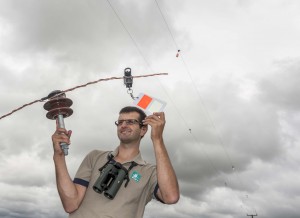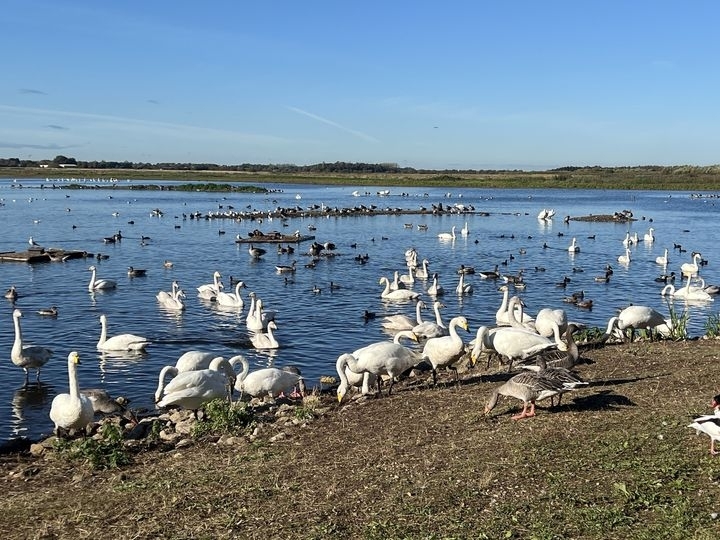Let us introduce Chris Taylor
Research topic: Bird flights and collisions (Powerlines)
Profile:
Originally from Dursley, Gloucestershire I spent a fair few weeks during School with the Reserves team at Slimbridge, Gloucestershire. After which I went to university in Abersytwyth to study Countryside Management. The next 6 years were spent mainly on Skomer Island, Pembrokeshire where I was the warden for the Wildlife Trust. The job was truly diverse ranging with everything from managing the budgets, giving introductory talks, plumbing, septic tanks, mending hides, managing volunteers and staff and continuing long term seabird research (population counts and breeding success, etc.). It was the research elements of the role that I enjoyed the most and this has been my chosen line since. I spent one summer working for the RSPB on various islands around Orkney putting GPS devices on seabirds to monitor their foraging patterns. My wetland interest had not left me though, when a Masters by Research was advertised by WWT, Electricity North West and Lancaster University I jumped at the chance. The Masters will give me the opportunity to develop my skills in statistics, Geographic Information Systems (electronic mapping used in the spatial analysis of data) and fieldwork. The project particularly appealed because of the practical application linked to the electricity company.
The project:
Both the public, WWT and Electricity North West all want to reduce the chance of collision between birds and powerlines.
A study of the distribution of relatively large numbers of swans and geese in relation to the Electricity NW supply network would help to identify areas where collision risk is relatively high. At the same time, inspection of the topography of sites where repeat collisions have been recorded by Electricity NW would help to determine landscape features which may account for the high collision rates. There is also data available from ringing recoveries and observation by teh public.
More detailed behavioural observations of swans and geese flying between their main roost site at WWT Martin Mere and feeding areas in the surrounding countryside would not only provide valuable information on the consistency of flight lines and altitude of flight, but indicate how these vary with wind conditions, and thus provide guidance on how best to route power-lines in areas used by large numbers of birds. Flight height (estimated from the birds’ flight-lines in relation to structures of known height such as electricity posts and lamp-posts) in relation to landscape features such as tree lines would also be assessed. Testing whether some types of deflectors are more effective than others in reducing collision rates would also be of value.
I hope the outcome will be to give guidance to power companies on where best to site bird diverters on current high risk powerlines but to also provide advice on where it would be best to site future powerlines with minimal risk to bird collisions.
If you have any information you feel would be useful for this project please do not hesitate to email me
chris.taylor@wwt.org.uk




